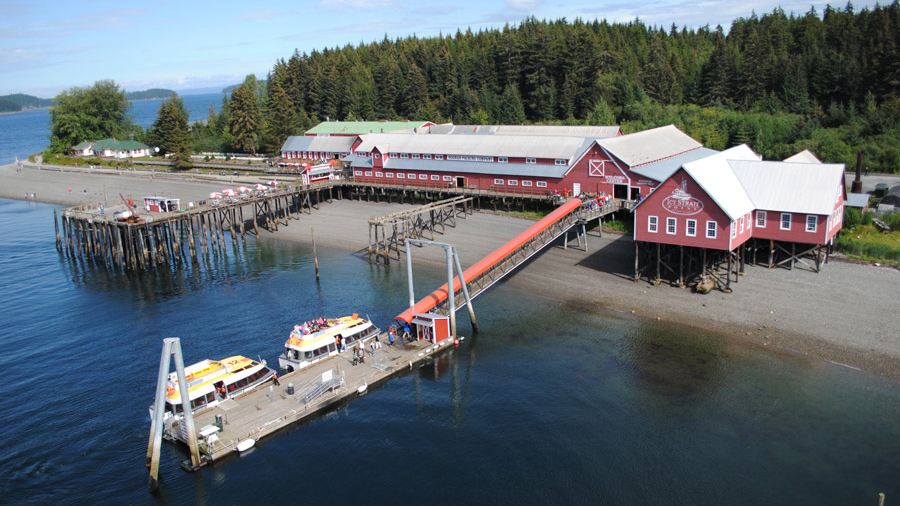The American Indian Alaska Native Tourism Association’s Cultural Heritage Planner
To learn more about AIANTA, visit https://www.aianta.org/
Brick-and-mortar cultural center or museum isn’t necessarily the only path to attracting travelers. Many tribes are diving deeper into agritourism, placing a welcome mat in front of their food sovereignty initiatives and traditional farming practices. Below are six tribes finding success in creating a welcoming place for visitors in their agriculture infrastructure.
Choctaw Nation of Oklahoma
Although the Choctaw Nation of Oklahoma has long collected pecans or Oksak Fvla (shelled hickory nuts), it wasn’t until 2016 that pecans became an independent business for the Tribe. Choctaw Farms now grows 150,000 pounds of pecans annually. The success of the Tribe’s agritourism ventures has led to the opening of three Choctaw Country markets, including one in the same redbrick building that served as the Tribe’s capitol building until 1907.
Yocha Dehe Wintun Nation
For California’s Yocha Dehe Wintun Nation, the idea for an olive vineyard first blossomed when Tribal Chairman Marshall McKay read reports about the poor quality of olive oil being produced in the U.S. Now the Tribe’s prime California location in the Capay Valley is home to more than 3,000 olive trees. The award-winning olive oil is sold at the Séka Hills Tasting Room, where guests also learn about the Tribe’s history. Several tribal gift shops sell the olive oil, as well as other Yocha Dehe Wintun Nation agricultural products including the Séka Hills wine label.
Icy Strait Point (Alaska)
Icy Strait Point, the Alaska-Native owned destination operated by the Huna Totem Corporation, was born from a restored 1912 Alaska salmon cannery. Now a seasonal cruise ship destination, Icy Strait Point offers more than 20 experiential adventure tours, including two signature culinary experiences, In Alaska’s Wildest Kitchen, led by former commercial fisher Dodie Lunda, and the more experiential The Tlingit Kitchen: A Taste of Southeast Alaska. Three on-site restaurants further serve up local culture, with menu items ranging from smoked salmon to reindeer chili and fries.
Pueblo of Santa Ana
Known for its blue corn products, sold at the award winning Hyatt Regency Tamaya Resort and Spa, the Pueblo of Santa Ana is also gaining recognition for its grape varietals. The 30-acre vineyard grows 140 tons of Pinot Noir, Chardonnay, and Pinot Meunier grapes. At 5,200 feet above sea level, these are the highest grown Pinot Noir grapes in the world. Interestingly, New Mexico was the first wine country in what is now the U.S., dating back to the early 1600s, when Franciscan friars traveling with the Spanish first planted grapes to make sacramental wine.
Oneida Big Apple Fest
Apples have been a staple crop of the Oneida Nation for hundreds of years, although Oneida’s orchards were destroyed by British sympathizers in retribution for the Nation’s support of the Colonists during the American Revolution. By reclaiming apple orchards, the Oneida Nation is using agritourism to honor its roots. The annual Oneida Apple Fest invites the public to celebrate the harvest and learn about the Tribe’s cultural traditions, including a tour of an Oneida Longhouse and log home. Since its 2009 beginnings, Big Apple Fest has seen an 87% increase in attendance and collected more than $70,000 in sales.
Iroquois White Corn Project (Seneca Nation of Indians, New York)
Founded in the 1990s, the Iroquois White Corn Project was designed to reintroduce a healthy and culturally important crop back to Tribal members. In part, the crop had been decimated by missionary insistence that men do the farming. (Traditionally, it was Seneca women who would plant and tend the cornfields.) In the present day, the Iroquois White Corn Project based at the Ganondagan State Historic Site, encourages Seneca farmers and volunteers to grow and prepare this versatile grain.
For more information on these and other tribal agritourism programs, please download AIANTA’s Case Studies in Tribal Agritourism at www.aianta.org/agritourism.




